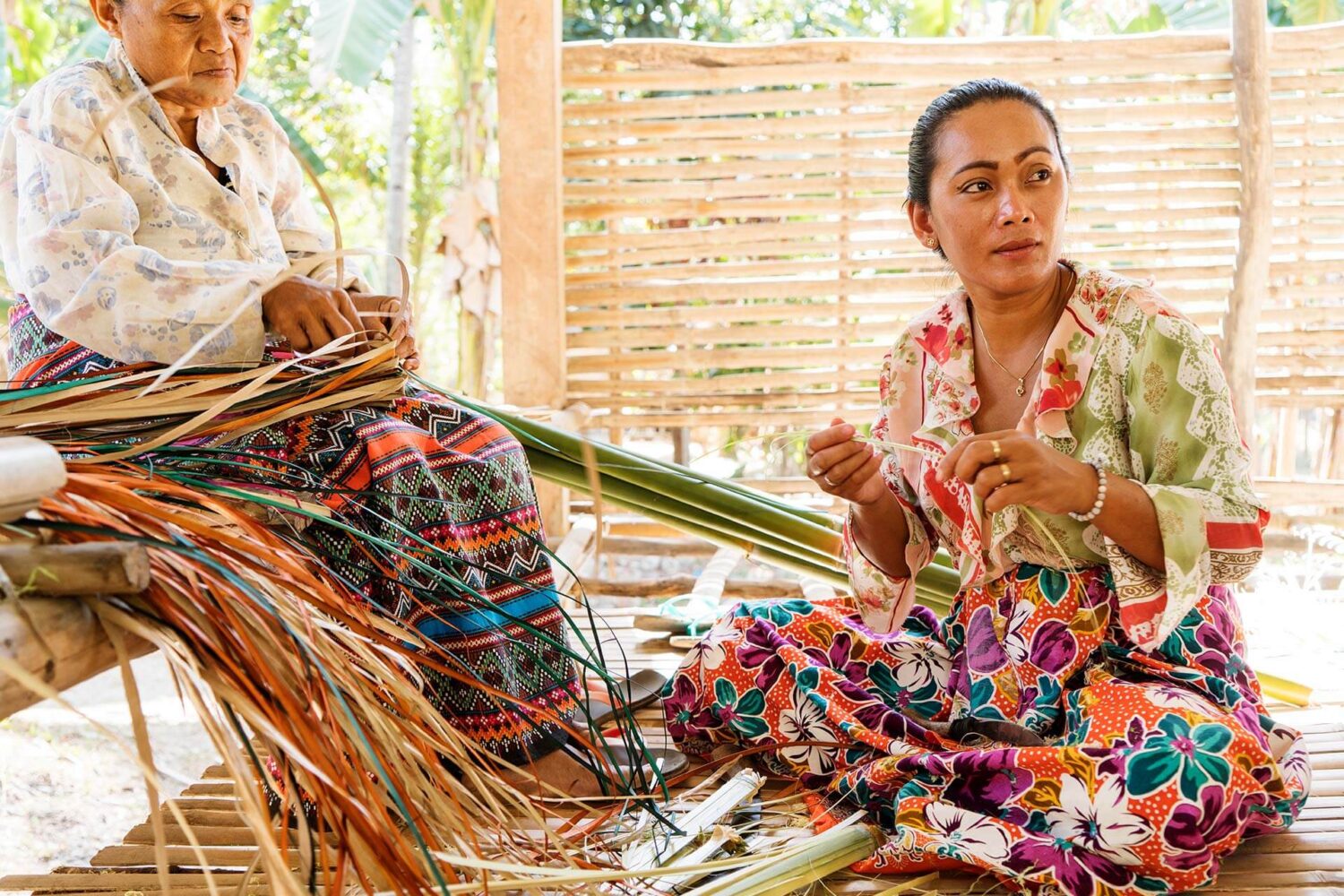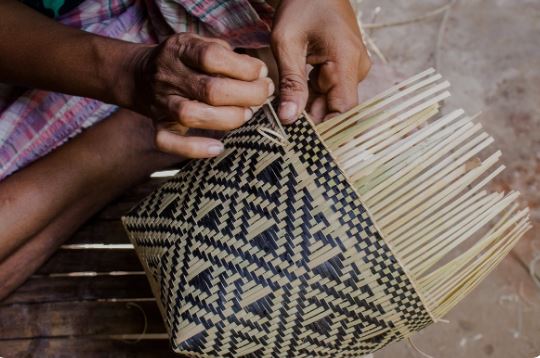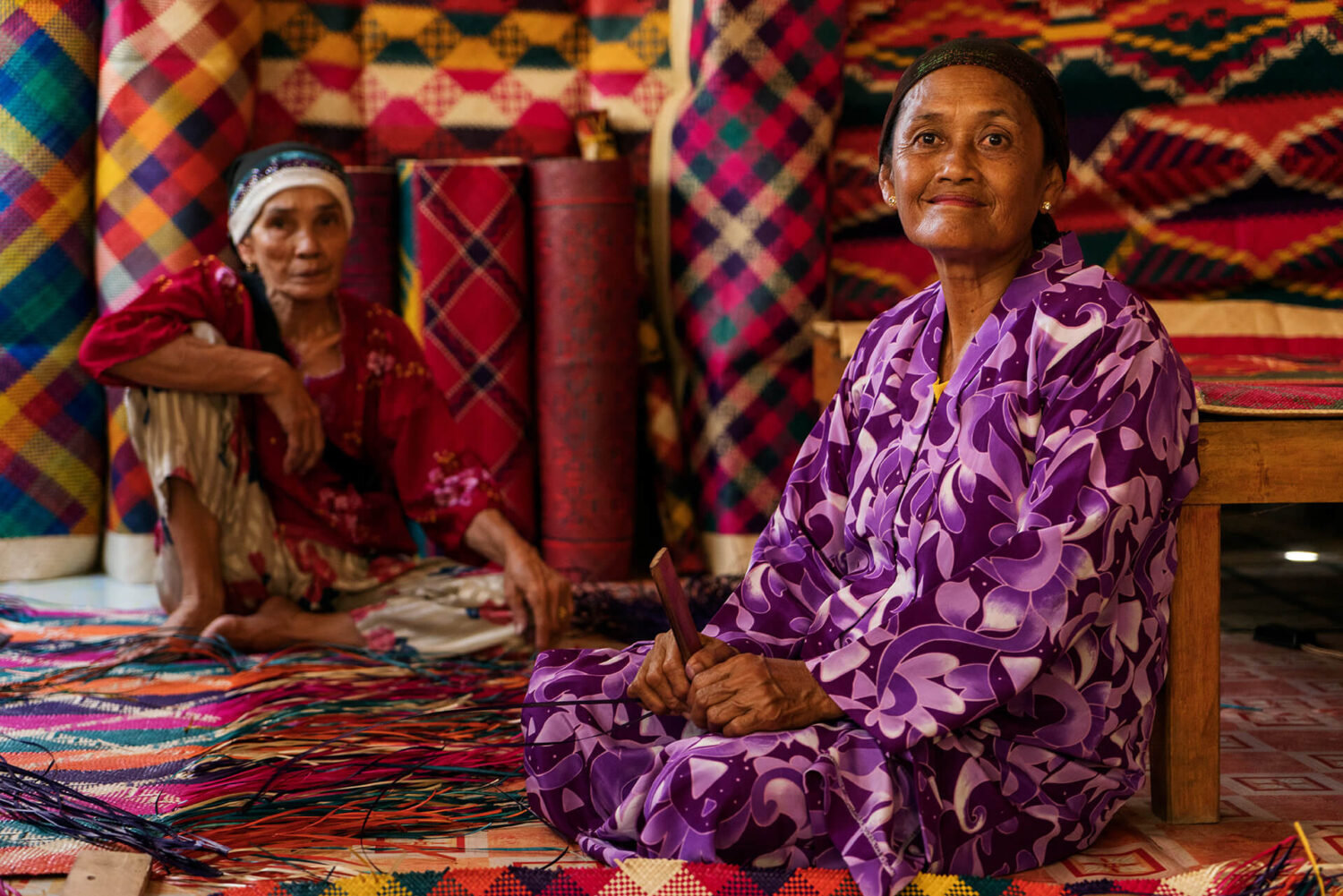Weaving
Traditional textiles and weaving in Palawan, home to a rich tapestry of traditional textiles and weaving practices. For centuries, local communities have been preserving and passing down these ancient crafts, creating unique and beautiful fabrics that reflect the island’s cultural heritage.
From the vibrant colors and intricate patterns of the Tagbanwa people to the delicate weaves of the Palawan’s tribe, Palawan’s textiles offer a glimpse into the island’s diverse cultural heritage. These traditional crafts are often created using natural dyes and materials, showcasing the ingenuity and resourcefulness of the local people.

Visitors to Palawan can learn about traditional textile weaving by visiting local communities, attending weaving demonstrations, or purchasing handmade textiles from local artisans. This not only supports the local economy but also helps to preserve these ancient traditions for future generations. Skilled artisans craft intricate fabrics using age-old techniques, reflecting the rich tapestry of Palawan’s diverse cultural landscape.

Here’s a detailed list exploring traditional textiles and weaving in Palawan:
Table of Contents
1. Inabel Weaving:
- Description:
- Inabel is a traditional handwoven fabric crafted by the indigenous communities of Palawan.
- The fabric is known for its intricate patterns and vibrant colors, often featuring geometric motifs inspired by nature.
2. Abaca Fiber Textiles:
- Description:
- Abaca, a type of banana plant native to Palawan, is a key material for weaving textiles.
- Palaweños skillfully extract fibers from abaca plants, creating durable and textured fabrics used in various applications.
3. Bamboo and Rattan Weaving:
- Description:
- Weaving techniques extend beyond textiles to include bamboo and rattan crafts.
- Artisans create intricate baskets, mats, and other functional items using these natural materials, showcasing the versatility of traditional weaving.
4. Bansuan Weaving:
- Description:
- Bansuan weaving is a traditional craft among the Tagbanua people of Palawan.
- Artisans produce finely woven mats and baskets using indigenous materials, demonstrating their commitment to sustainable practices.
5. T’nalak Weaving:
- Description:
- T’nalak is a traditional fabric crafted by the T’boli people of Palawan, particularly in the southern regions.
- It involves a labor-intensive process of abaca fiber extraction, dyeing, and weaving, resulting in unique and visually striking patterns.
6. Handloom Weaving:
- Description:
- Handloom weaving is a prevalent method in crafting traditional textiles in Palawan.
- Artisans use wooden handlooms to create fabrics with precision, allowing for intricate designs and patterns.
7. Natural Dyes:
- Description:
- Traditional textiles in Palawan are often dyed using natural pigments derived from plants and minerals.
- Local flora, such as leaves, barks, and roots, contribute to a spectrum of colors, reflecting the eco-friendly practices of indigenous weavers.
8. Mat Weaving:
- Description:
- Mat weaving is a traditional craft integral to daily life in Palawan.
- Mats serve various purposes, from sleeping to ceremonial use, and are often intricately woven with unique patterns.
9. Lalab Weaving:
- Description:
- Lalab is a traditional weaving technique used by the Palaw’an people.
- This method involves creating finely woven mats and baskets, showcasing the artistry and skill of the weavers.
10. Tribal Textile Patterns:
- Description:
- Tribal textiles often feature distinct patterns that carry cultural significance.
- Motifs may represent stories, symbols, or elements of nature, preserving the cultural identity of Palawan’s indigenous communities.
11. Sustainable Practices:
- Description:
- Weaving in Palawan often aligns with sustainable practices, emphasizing the use of locally sourced materials and eco-friendly dyeing techniques.
- Artisans prioritize environmental conservation and maintain a harmonious relationship with nature.
12. Community-Based Weaving Centers:
- Description:
- Some communities in Palawan have established community-based weaving centers.
- These centers serve as hubs for preserving traditional weaving knowledge, fostering cultural exchange, and supporting local economies.
Preservation and Revitalization Efforts:
- Cultural Workshops: Various cultural workshops and initiatives are dedicated to teaching the art of traditional weaving to younger generations, ensuring the continuity of this cultural heritage.
- Collaborations with Designers: Collaborations between indigenous weavers and contemporary designers contribute to the revitalization of traditional weaving, bridging the gap between tradition and modernity.
- Promotion of Indigenous Crafts: Events, exhibitions, and tourism initiatives that highlight traditional textiles and weaving play a crucial role in promoting and preserving Palawan’s indigenous crafts.
Traditional textiles and weaving in Palawan are not just crafts; they are living expressions of cultural identity, heritage, and sustainable practices.

The intricate designs, natural materials, and time-honored techniques encapsulate the deep connection between Palawan’s indigenous communities and the artistic legacy they carry forward.
Tiki Tours, a leading tour operator in Palawan, offers a 3-day expedition to El Nido that includes visits to local communities where traditional textile weaving is practiced. This expedition provides an opportunity to learn about the history and techniques of textile weaving in Palawan while exploring the island’s stunning natural beauty.
By supporting traditional textile weaving in Palawan, visitors can contribute to the preservation of this important cultural heritage and help to ensure that these ancient crafts continue to thrive for generations to come.
